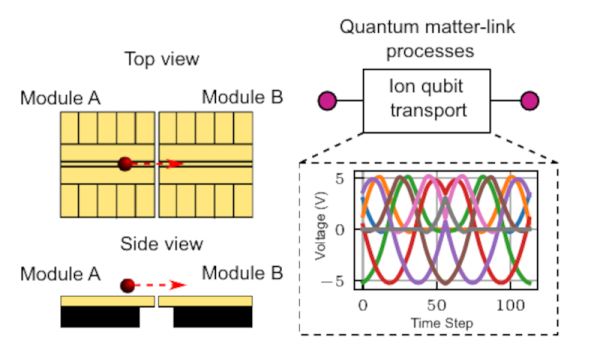If you are a retrocomputer fan, you might remember when serial ports were a few hundred baud and busses ran at a few megahertz at the most. Today, of course, we have buses and fabric that can run at tremendous speeds. Quantum computing, though, has to start from scratch. One major problem is that jockeying quantum states around for any distance is difficult and slow. Part of it is that qubits decay rapidly, so you don’t have much time. They are also generally susceptible to noise and perturbation by outside forces. So many quantum machines today are limited by how much they can cram on one chip since there isn’t a good way to connect to another chip. The University of Sussex thinks it has improved the outlook for quantum interconnects with a technique they claim can move qubits around at nearly 2,500 links per second.
The technique, called UQ Connect, uses electric field links to connect multiple chips using trapped ions for qubits. If you want to read the actual paper, you can find it in Nature Communications.











